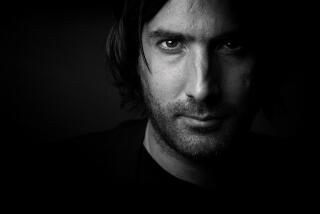Brother’s Keeper
- Share via
“You try being the brother of a paranoid schizophrenic. See if it doesn’t royally [expletive deleted] up your life. Your relationships.” So rages Dominick Birdsey, the younger brother (by six minutes) and identical twin of Thomas Birdsey, who, in the opening pages of “I Know This Much Is True,” walks into a public library and lops off his own hand in an ill-conceived effort to avert the Gulf War. Dominick is surely justified in his complaint; since the death of their mother six years earlier, his role as brother’s keeper has been all-consuming, and its toll has been heavy. Now, in midlife, he is childless and parentless, divorced from a woman he loves and partnered with a woman he does not, floundering in the wrong career and--in his long effort to untwin himself--in flight from his own nature. Dominick may never, for all his searching, manage to identify the element that made his brother “it,” the one chosen for a lifetime of delusional suffering, but he is happy to assign himself blame nonetheless: “When you’re the sane brother of a schizophrenic identical twin, the tricky thing about saving yourself is the blood it leaves on your hands.”
Thomas’ self-termed godly sacrifice is the catalyst for his brother’s final unraveling and subsequent restoration through therapy and a dredging of the past. In despair over Thomas’ commitment to a high-security psychiatric unit (the political fallout of his mediagenic self-mutilation), Dominick turns to his brother’s psychiatrist, a maternal, wise and utterly familiar character named Dr. Patel. Under her aegis, Dominick’s story unfolds in a multitude of time frames--childhood, the onset of Thomas’ illness at the age of 19, the demise of Dominick’s marriage and the present. Interspersed with these is the bizarre and seductive narrative of Dominick’s namesake, his paternal grandfather, Domenico Tempesta, or as he thinks of himself, “a Great Man from Humble Beginnings.”
The voice in which Dominick tells this story fluctuates between lofty self-examination and a grating chumminess (“He’s sort of the ex-hippie type: bib overalls, red hair that he wears in a braid that goes halfway down his back. I saw him in two braids once. . . . He’s successful, I guess, not that I know anything about pottery. He’s won awards and shit.”), as if the reader were perched on the next bar stool or across the kitchen table.
Lamb’s novel suffers from two main difficulties that, logically, ought not to exist in tandem. On one hand, it is head-buttingly obvious in its symbolism, calling loud attention to Dominick’s moments of insight in an effort to make sure we do not miss the critical bits. Lamb’s tendency in this direction was evident in his first novel, the widely read “She’s Come Undone” (most memorable was an episode in which the obese heroine pondered a beached and dying whale), and he has not done himself a favor by selecting as his subject the very fertile symbolic ground of twinship. By the time Dominick has finished his lament and found some measure of peace in his life, he has moved from being “one fertilized egg that split in half and went off in two directions” to “I wasn’t even whole anymore,” hitting every conceivable epiphany along the way. (Add to this the curious, if not contrived, twist of those six minutes separating Dominick and his older brother, six minutes that give them not only different birth dates but different birth years, years moreover that root the two brothers in opposite halves of the 20th century.)
Lamb seems reluctant to merely offer these symbols for our recognition; repeatedly, he force-feeds them to us, as in Dr. Patel’s gentle reassurance to her patient that “there are two young men lost in the woods. Not one. Two.” The first statement would have brought the point home. The second is redundant. The third, annoying.
Then, conversely, there is the second difficulty, an obscurity that haunts the novel with its lingering suggestion of missed connections. The book’s jacket copy implies that Dominick’s story parallels that of a proud king in an ancient Hindu myth, and indeed we frequently sense that we must be in the presence of some Eastern symbolism because monkeys frequently pop up in the narrative and the sari-clad Dr. Patel gives her patient the gift of a dancing Shiva. Other than these glancing points of contact, however, there are no parallels and no lessons beyond the one most broadly stated in the jacket copy: “Change yourself . . . and you will inhabit a renovated world.” Magic realism, a phrase similarly used in the jacket copy, is equally absent from the book, despite the plethora of rabbit and monkey references. It takes more than one mention of a weeping statue to cast a 900-page novel as a work of magic realism.
But Dominick, despite his jarring shifts among passivity, aggression and self-destruction, is a likable, compelling character, and our affection for him carries us through this lengthy novel and makes the story seem, for all its bulk, rather agile. If Lamb’s touch is heavy when it comes to Dominick’s self-awareness, the author also has a way of letting his character’s simpler emotions speak for themselves; accordingly, we root for Dominick as he gropes from anguish to peace, and this, in the end, is what ultimately keeps us engaged. It may not obscure the novel’s considerable weaknesses, but it is a substantial compensation.
More to Read
Sign up for our Book Club newsletter
Get the latest news, events and more from the Los Angeles Times Book Club, and help us get L.A. reading and talking.
You may occasionally receive promotional content from the Los Angeles Times.










